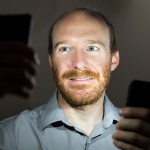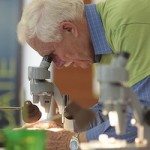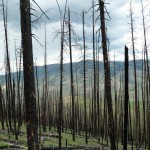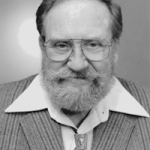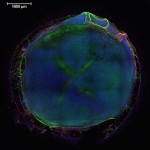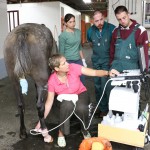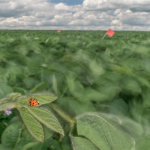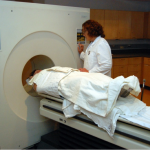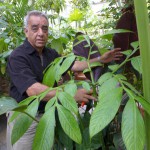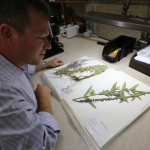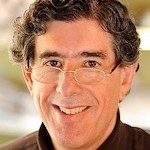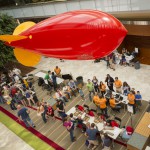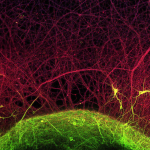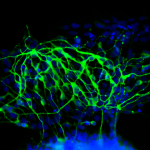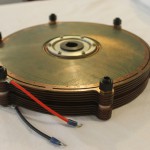Category Science & Technology
Sigma-Aldrich employees partner with SCIENCountErs program
To provide more opportunities for young people to engage in science, the University of Wisconsin–Madison’s Nanoscale Science and Engineering Center (NSEC) and Institute for Chemical Education (ICE) have partnered on a wide range of science outreach programs. The effort was recently bolstered by a new three-year partnership with Sigma-Aldrich, a global life sciences and technology company based out of St. Louis, Missouri, with facilities in Madison and Milwaukee.
Physicist turns smartphones into pocket cosmic ray detectors
Soon, the growing capability of your smart phone could be harnessed to detect cosmic rays in much the same way as high-end, multimillion-dollar observatories. With a simple app addition, Android phones, and likely other smartphone brands in the not-too-distant future, can be turned into detectors to capture the light particles created when cosmic rays crash into Earth’s atmosphere.
Phi Beta Kappa Society recognizes Wisconsin Science Festival
The Phi Beta Kappa Society’s National Arts & Sciences Initiative will recognize the Wisconsin Science Festival with a Key of Excellence Award at a…
Mountain pine beetles get a bad rap for wildfires, study says
Mountain pine beetles get a bad rap, and understandably so. The grain-of-rice-sized insects are responsible for killing pine trees over tens of millions of acres in the Western U.S. and Canada over the last decade. But contrary to popular belief, these pests may not be to blame for more severe wildfires like those that have recently swept through the region. Instead, according to a new study by UW–Madison zoology professor Monica Turner, weather and topography play a greater role in the ecological severity of fires than these bark-boring beetles.
In memoriam: Ray D. Owen discovered immune tolerance, paved the way for organ transplantation
Ray D. Owen, who died on Sept. 21 in Pasadena, California, at the age of 98, discovered the phenomenon of immune tolerance, fueling a revolution in immunology and laying the foundation for the successful transplantation of human organs. Owen left Madison in 1947 to join the faculty at Caltech, where he remained for the rest of his long, distinguished career. His later work included studies on human antibodies, blood-group antigens, and the evolution of immune systems.
UW-Madison team developing ‘tissue chip’ to screen neurological toxins
A multidisciplinary team at the University of Wisconsin–Madison and the Morgridge Institute for Research is creating a faster, more affordable way to screen for neural toxins, helping flag chemicals that may harm human development.
Actions on climate change bring better health, study says
The number of extremely hot days in Eastern and Midwestern U.S. cities is projected to triple by mid-century, according to a new study led by University of Wisconsin–Madison researchers and published today in the Journal of the American Medical Association.
Ultrasound enhancement provides clarity to damaged tendons, ligaments
Ultrasound is a safe, affordable and noninvasive way to see internal structures, including the developing fetus. Ultrasound can also “see” other soft tissue — including tendons, which attach muscles to bone, and ligaments, which attach bone to bone. Ray Vanderby, a professor of biomedical engineering and orthopedics and rehabilitation at the University of Wisconsin–Madison, is commercializing an ultrasound method to analyze the condition of soft tissue.
Badger duo experiences an amazing summer on ‘The Amazing Race’
Amy DeJong and Maya Warren had a truly epic summer, but they can't tell you about it.
Dwindling wind may tip predator-prey balance
Bent and tossed by the wind, a field of soybean plants presents a challenge for an Asian lady beetle on the hunt for aphids. But what if the air - and the soybeans - were still?
Researchers study vital ‘on/off switches’ that control when bacteria turn deadly
No matter how many times it’s demonstrated, it’s still hard to envision bacteria as social, communicating creatures. But by using a signaling system called “quorum sensing,” these single-celled organisms radically alter their behavior to suit their population. Helen Blackwell, a professor of chemistry at the University of Wisconsin–Madison, has been making artificial compounds that mimic the natural quorum-sensing signals, including some that block a natural signal from binding to its protein target.
Down syndrome helps researchers understand Alzheimer’s disease
The link between a protein typically associated with Alzheimer's disease and its impact on memory and cognition may not be as clear as once thought, according to a new study from the University of Wisconsin–Madison's Waisman Center. The findings are revealing more information about the earliest stages of the neurodegenerative disease.
Campus botany gardener: transplant master
To hear master gardener Mo Fayyaz tell it, raising plants is straightforward: Get the right light, temperature, soil and water. Keep your eyes open. If one thing doesn’t work, try something else. And if everything fails, choose another plant. “You cannot just plant a rose in the shade and expect much,” he says. In 1984, Fayyaz secured his present job, director of UW–Madison’s Botany Garden and Greenhouse, and he began a long campaign to nurture and expand a garden that supports teaching and research in the biological sciences.
Journal Sentinel’s Mark Johnson to be Science Writer in Residence
Pulitzer-prize winning journalist Mark Johnson will bring his experience and expertise to campus as the fall 2014 University of Wisconsin–Madison Science Writer in Residence.
Project prepares collection for 21st-century challenge of invasive species
At the Wisconsin State Herbarium, director Kenneth Cameron is spearheading a new, three-year project to “digitize” images and data on aquatic and wetland plants, mollusks and fish from the Great Lakes basin. The $2.5 million grant from the National Science Foundation will also be disbursed to natural history museums at UW campuses in Stevens Point, Milwaukee and La Crosse, and in every other Great Lakes state. Together, these institutions expect to digitize 1.73 million specimens related to Great Lakes invasives.
Yogic breathing shows promise in reducing symptoms of post-traumatic stress disorder
One of the greatest casualties of war is its lasting effect on the minds of soldiers. This presents a daunting public health problem: More than 20 percent of veterans returning from the wars in Iraq and Afghanistan have post-traumatic stress disorder, according to a 2012 report by RAND Corp.
Wisconsin Science Festival to celebrate scientific discovery, community
Thousands of visitors, young and old, will have the chance to indulge their “inner scientist” during the 2014 Wisconsin Science Festival, with more than 20 communities statewide joining Madison in the event. Now in its fourth year, the festival will be held from Oct. 16-19.
Cool Science Image collection debuts at McPherson Eye Research Vision Gallery
The winning images from the 2014 Cool Science Image (CSI) contest will be on display beginning Sept. 2 at the Mandelbaum & Albert Family Vision Gallery, part of the McPherson Eye Research Institute.
In directing stem cells, study shows context matters
In a new study, a team of researchers from the University of Wisconsin–Madison has added a new wrinkle to the cell differentiation equation, showing that the stiffness of the surfaces on which stem cells are grown can exert a profound influence on cell fate.
New motor under development by UW–Madison spinoff
A tabletop motor using an entirely new driving principle is under development at the headquarters of C-Motive Technologies, a startup business that is commercializing technology from the College of Engineering at UW–Madison.

